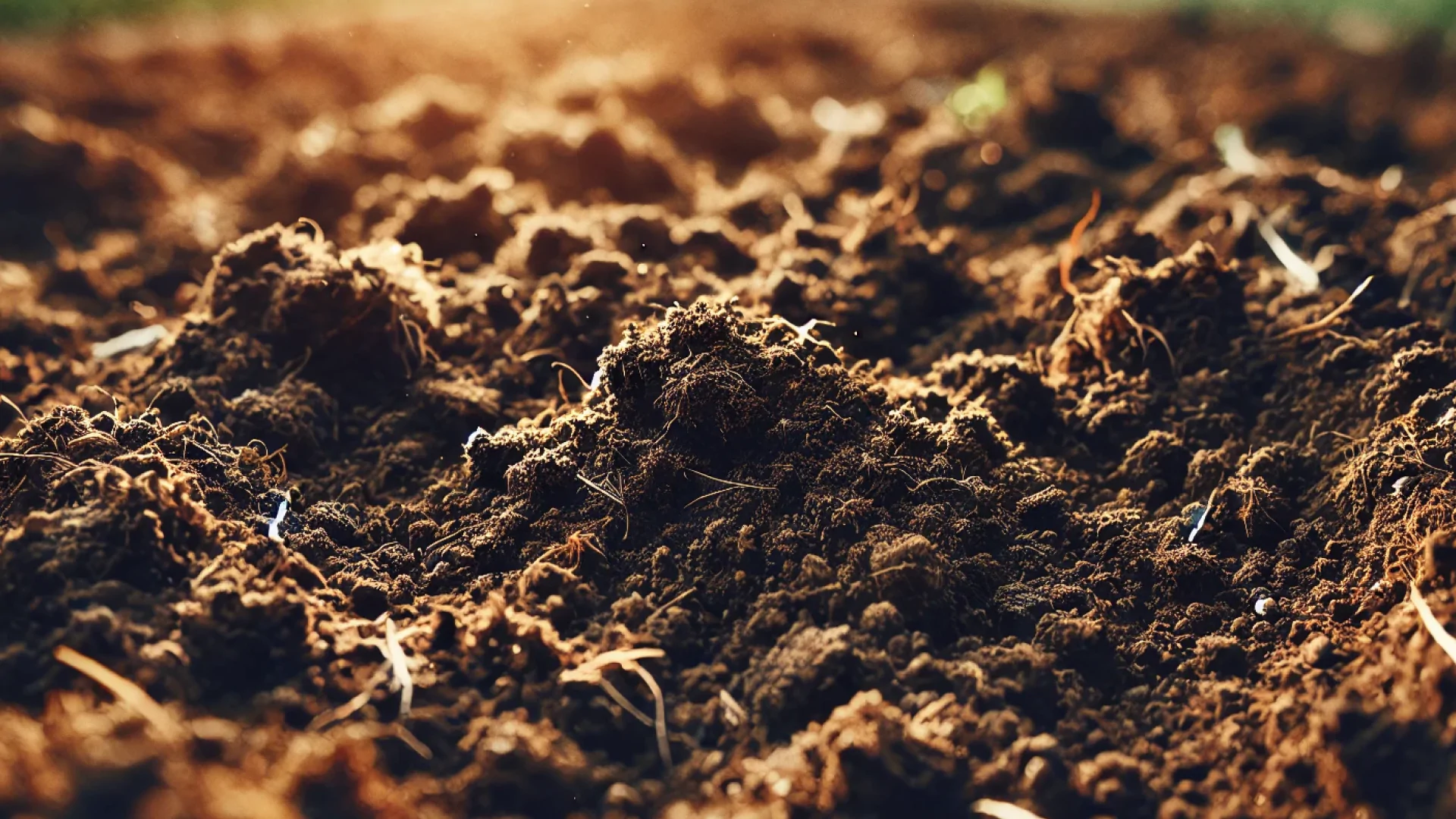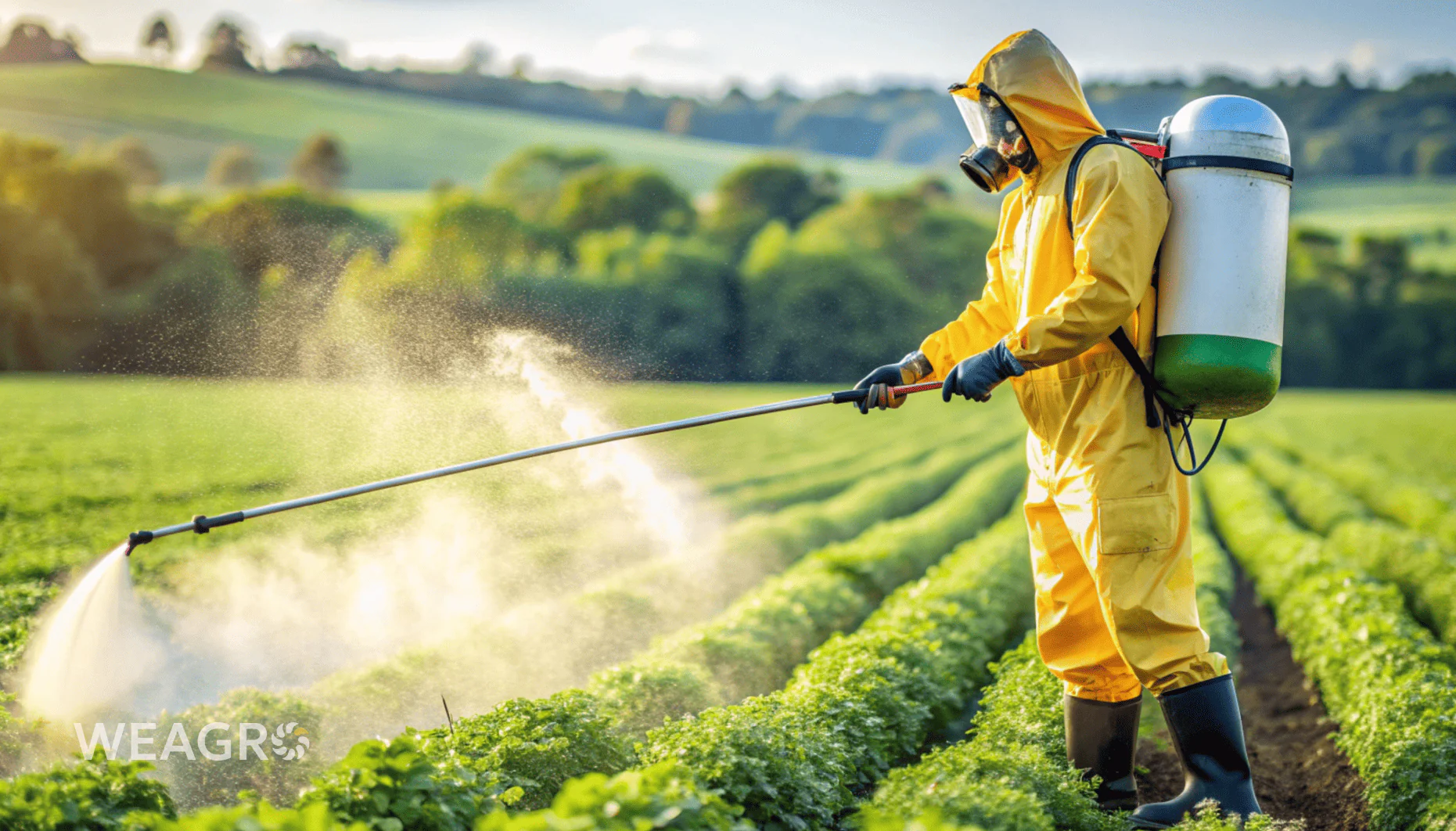The condition and fertility of land directly affects future crop yields: soil is the foundation of everything. For success in agribusiness, farmers need to develop the right strategy that will optimize costs while increasing productivity. This requires careful preparation for future planting work, as well as excellent knowledge of the features, characteristics and disadvantages of available land. A detailed overview of the main types, kinds, and methods of improving land quality will be useful for farmers.
What is Soil
The characteristics and condition of the main resource for growing agricultural crops determine its productivity. Soil is the upper layer of the earth’s crust that is vital for plants and many forms of living organisms. Its structure and composition can vary significantly depending on:
- geographical location;
- climate;
- vegetation;
- topography;
- age;
- other factors.
Proper care is important for preserving biodiversity, which directly affects fertility as well as the water retention capacity of fields. By understanding well what soil is, and most importantly, what type and kind is on a specific plot, farmers can properly select organic fertilizers and maintain structure and nutrition, ensuring sustainable farm development.
What Soil Consists Of
A complex and multi-component system contains several main layers that create a favorable environment for the growth and development of plants and microorganisms. What is included in soil composition:
- mineral particles — clay, sand, silt and gravel, determine texture, affect the ability to retain water and nutrients;
- organic matter — plant and animal remains that improve structure and affect fertility;
- water — dissolves nutrients, making them available, and participates in various chemical and biological processes;
- air — fills pores between mineral particles, providing roots with oxygen necessary for respiration;
- living organisms — important soil components, including: micro — bacteria, fungi and actinomycetes, as well as macro — insects, worms, which are necessary for aeration, nutrient circulation and water retention.
Among the key characteristics that determine productivity on a given plot, the following can be highlighted:
- structure — size and arrangement of mineral particles;
- pH — acidity level that directly affects nutrient availability for plants;
- drainage — ability to pass water, preventing stagnation and root rot;
- fertility — content of nutrients such as nitrogen, phosphorus and potassium.
Soil composition determines its appearance and properties, including aeration, water retention capacity, and resistance to erosion. The ratio of mineral particles largely determines suitability for growing various agricultural crops.
Read also: How to Determine Soil Acidity and How to Lower or Increase It
Types of Soils
Composition determines characteristics and fertility level. The main types of soils in Ukraine contain three key components: sand, silt and clay. The difference between them lies in particle size: the smallest are in clay, which causes their tight adhesion to each other, and accordingly less air. Understanding the main components and their features allows choosing the optimal strategy for improving the properties and characteristics of a designated area for productive cultivation of agricultural crops.
| Main component | Sand (particles 0.05-2 mm) | Silt (0.002-0.05 mm) | Clay (less than 0.002 mm) |
| Processing difficulty | Easy | Easy | Difficult |
| Drying speed | High | At medium level, but with cracks during drying, and need for constant aeration | Low, with cracking when drying |
| Warming after winter | Fast | Fast | Slow |
| Water capacity | Poor | Despite good drainage, retains sufficient moisture | Retains incoming water for a long time |
| Absorption rate | 0.6 inches per hour | 0.3 inches per hour | 0.1 inches per hour |
| Field capacity | 0,1% | 0,255% | 0,357% |
| Nutrients | Few | Sufficient amount | Many |
| Suitable for which plants | Ideal for plants with deep roots that need good drainage and do not like water stagnation. | Suitable for vegetables and grains that need moderate water capacity and sufficient nutrients. | Good option for plants that require a lot of moisture and need a rich nutritional environment. |
Silt may seem like a universal solution, but in reality any composition has its advantages and disadvantages — and with the right approach, excellent results can be achieved. What types of soils are there in Ukraine? Variations are quite numerous.
Sandy Soils
Characterized by large mineral particles, providing excellent drainage capacity and good aeration. They warm up quickly in spring, allowing early sowing. But low ability to retain water and nutrients can be a problem for crops that need stable water supply and nutrition. Excellent option for growing:
- carrots;
- radishes;
- potatoes;
- asparagus;
- melons.
Regular application of organic fertilizers such as compost or manure is recommended. Frequent but not too abundant watering is needed to maintain the necessary moisture level. Mulching prevents water evaporation and improves structure.
Sandy Loam Soils
In many ways similar to sandy soils, but at the same time able to absorb and retain moisture, preventing the leaching of minerals and substances necessary for full plant growth and development. They quickly release excess moisture but do not dry out, and no dense crust forms on the surface. They warm up well.
Peat-bog Soils
Formed in places with high organic matter content. They have high acidity and good water retention capacity, but are poor in minerals — potassium and phosphorus, requiring regular application of additional fertilizers. Suitable for:
- blueberries;
- cranberries;
- lettuce;
- spinach.
Lime application helps reduce acidity, and drainage systems prevent moisture stagnation near roots.
Rocky Soils
Not the best choice for agricultural activity. Rock formations are the main component of such soil. It can retain heat for a long time, but not water. There are no favorable conditions for microorganism development.
Loam Soils
A mixture of sand, silt and clay that has acquired properties of all three components. Excellent option for most agricultural crops due to ease of processing, good water capacity, and balance of large and small particles. Suitable for growing:
- tomatoes;
- cucumbers;
- zucchini;
- peppers.
High nutrient content is an important advantage for maintaining fertility, as is good air circulation and ability to retain moisture. They warm up quite quickly, maintaining constant temperature.
Clay Soils
Contain the smallest mineral particles that fit tightly together. This provides high ability to retain water and nutrients, but also makes soil dense and poorly drained. Clay soils warm up slowly in spring and can become difficult to process, especially in wet weather. What can be grown on clay soil:
- cabbage;
- broccoli;
- peas;
- beans.
Creating drainage channels or raising beds prevents water stagnation. Regular loosening is necessary for root aeration. It is important not to allow soil to dry out and form a dense crust that completely blocks the access of light, air and healing moisture.
Chalk Soils
Distinguished by high calcium carbonate content, which places them in the alkaline category. Accordingly, they are not suitable for crops that need acidic soils and require regular pH correction with fertilizers.
Soil Types
Various soil types are represented on the territory of Ukraine. A table with description of main characteristics allows understanding the features of each of them.
| Soil type | Region | Humus content % | Improvement tools |
| Sod-podzolic | Polissia | Up to 2 | Drainage, liming |
| Chernozem | Forest-steppe, steppe | 4-8 | Irrigation, erosion control |
| Gray forest | Southern part of Polissia, Forest-steppe | 2-3 | Erosion control, liming |
| Chestnut | Black Sea region | 3-4,5 | Irrigation, gypsum application |
The features possessed by different soil types of Ukraine are well demonstrated by the table. A detailed overview of key characteristics will be useful for farmers for proper care and selection of plant crops for planting.
- Sod-podzolic. Formation under conditions of increased humidity led to low content of useful substances, requiring constant organic feeding. This is a good option for planting potatoes, peas and rye.
- Gray forest. Common in deciduous forest areas. Formed on loamy rocks with sufficient moisture. But due to low humus content, fertility is average, while suitable for growing most agricultural crops.
- Chernozem. The most famous soil type that became Ukraine’s pride. Occupies about 65% of the territory. Has granular-lumpy structure, and humus level reaches 15%, humus layer can exceed 1 meter. Universal and suitable for planting almost any plants.
- Chestnut. Predominant in arid regions, horizon is about 0.5 meters. Require constant moistening and fertilizer application. Often used for growing fodder grasses, and will also be a good choice for grapes or melon crops.
A brief description of the main soil types of Ukraine, table and basic recommendations will be useful in creating and maintaining optimal conditions for plants. In addition, other types of soils are represented on the country’s territory: bog, peat-bog, acidic, acid-bog, and in some areas the soil horizon contains excessive salt, making them unsuitable for agricultural activity.
How to Determine the Type and Kind of your Soil
There are several simple tests that will help determine soil properties. Ukraine’s soils are quite diverse — and each requires a certain approach, but several simple methods will help compile a current list of necessary measures:
- fill a jar one-third with soil, add water and shake — after 24 hours, sediment layers will be clearly visible in this sequence: sand, silt, clay;
- form a small lump of soil into a ball and roll into a thin ribbon — sand crumbles, while clay forms easily;
- rub between fingers and rely on sensation — greasiness and stickiness indicate high clay content, while crumbliness indicates sand.
Having determined soil types on the territory, farmers can purchase necessary fertilizers and tools for further productive land cultivation. The online service WEAGRO offers advantageous agricultural installments that allow purchasing everything necessary with payment deferral.
Soil Fertility
Understanding the type and kind of soils allows assessing their suitability for growing selected agricultural crops. Soil fertility depends on its chemical composition, organic matter and microorganism content, as well as structure and ability to retain moisture and nutrients. Accordingly, this indicator determines the ability of soils to provide plants with necessary nutrition and moisture, which largely determines resistance to diseases and pests.
Read also: Remote sensing of Earth: types and prospects
What is soil fertility
This is a key factor for obtaining large harvests, and most importantly — maintaining ecosystem health. Soil fertility is the level of its nutrition, which depends on humus content, as well as air and moisture permeability. Important components invariably remain nutrients, particularly — nitrogen, phosphorus, potassium, zinc, boron, which are very necessary for normal crop growth.
Types of Soil Fertility
A basic classification has been developed that defines this indicator:
- Potential — presence of nutrients in various forms.
- Natural — formed as a result of main layer formation. Decreases over time due to soil depletion, which is why it is so important to periodically change the placement of cultivated crops.
- Artificial — improvement of indicators through fertilizer application, irrigation, drainage, and other methods of agricultural land treatment.
- Effective — actual yield obtained considering the influence of natural and potential factors.
Soil fertility and its types are closely related, as the final crop volume depends not only on the main soil characteristics, but also on conducted improvement measures.
How to Determine Soil Fertility
Productivity is affected by a number of indicators: from biological to agrochemical and agrochemical. Soil fertility depends on organic matter content, contamination with harmful plants, presence of pests, acidity and other factors. To assess the quality of agricultural lands, one of the available methods can be used.
pH Measurement
Excessive acidity, like alkaline environment, is harmful to most agricultural crops. Ukraine’s soils received an average indicator at 6.2, but in any case, analysis needs to be conducted on a specific plot. For this purpose, special litmus paper is used — test strips with indicators.
Texture Assessment
Having determined the amount of sand, loam and clay using the previously listed methods, one can form a list of basic field characteristics and accordingly select those crops that will please with maximum yield under such conditions.
Chemical Analysis: Soil Fertility Depends on its Composition
The simplest and most reliable tool that will show exact nutrient content, including phosphorus, potassium and nitrogen. This will help form an optimal list of organic fertilizers. The only disadvantage of the method is high cost.
How to Increase Soil Fertility
Modern technologies and the variety of available nutrients have significantly expanded agricultural sector possibilities. All soil types can be used for cultivation, the main thing is to consider their specifics and regularly conduct certain improvement measures:
- Sod-podzolic — require regular crop rotation, application of organic, mineral and lime compositions, drainage, growing green manure and cover crops;
- Forest (brown and gray) — similar methods are used that increase soil fertility, and constant erosion control and measures aimed at moisture conservation are necessary;
- Chernozem — it is important to prevent soil salinization and consider the needs of cultivated crops, choosing appropriate fertilizers and maintaining optimal moisture levels, plus periodic crop rotation will be beneficial;
- Chestnut — yield largely depends on sufficient moisture supply to fields, and constant fight against various types of salinization and periodic gypsum application are important.
Soil is the foundation of everything. Preserving its quality and productivity is the primary task of any farmer. With the help of the WEAGRO service, developed specifically for agribusiness representatives, suppliers and buyers can conclude advantageous purchase-sale agreements with deferral. This will allow purchasing a complete set of fertilizers and equipment for land cultivation to start work on time, and pay gradually over a period of up to 180 days.









